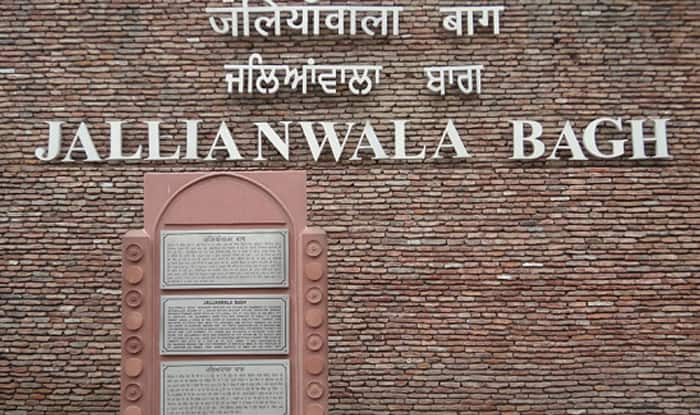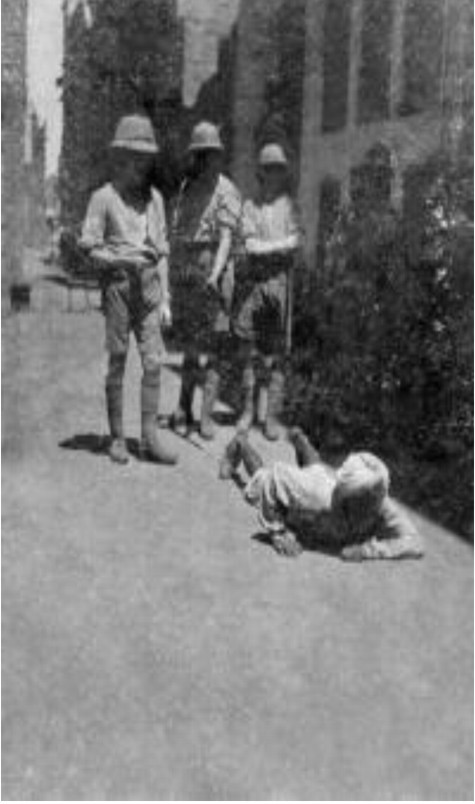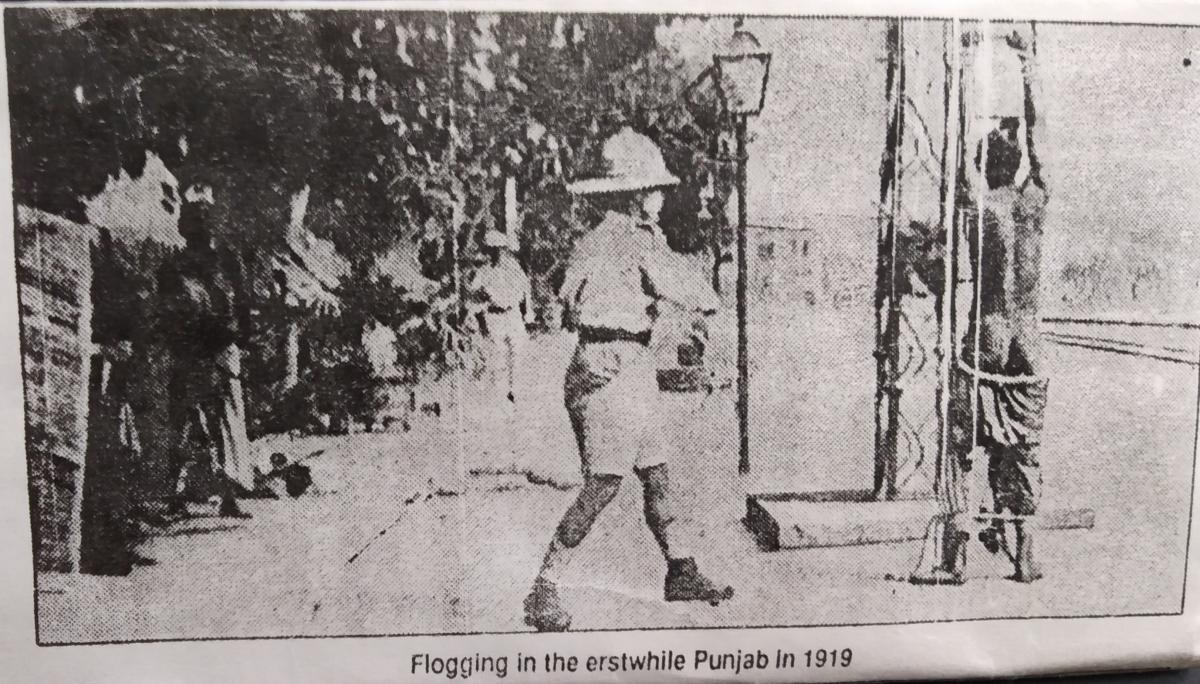100 years after the Jallianwala Bagh, documents recording the repression and resistance remain hidden in the National Archives

Today, India has turned into a grazing field for all kinds of religious bigots led by the Hindutva gang. Even the Prime Minister of the country, who took an oath to uphold the Constitution, is identifying himself as a Hindu nationalist, as if he is in office to serve the cause of Hindutva. The RSS/BJP rulers are openly declaring their commitment to turn India into a Hindu state, where the Brahminical codes of Manu, which reduce women and Dalits to sub-human status, would be the law of the land. For them, India is the Fatherland and holy land for Hindus only. It is to be noted that as per the Hindutva definition, only those can be considered as Hindus who have Aryan blood, believe in casteism, are of fair colour, and treat Sanskrit as a holy language. It is not just Muslims and Christians who are out of Hindu nation, even faiths such as Sikhism, Buddhism and Jainism can survive only as sects of Hinduism.
However, this was not the scenario 100 years ago, when the British rulers perpetrated one of the worst massacres in the modern history: the Jallianwala Bagh massacre. People of India shackled by the most powerful imperialist power of the world–Britain–presented a heroic, united resistance. This is not hearsay, but proven by official, mostly British documents. These amazing documents were part of the British archives, which became National Archives of India after Independence. These documents were made public to mark the 75th anniversary of the Jallianwala Bagh massacre, as part of an exhibition titled, ‘Archives and Jallianwala Bagh: A Saga of Independence’.
Most documents, concerning the most volatile period of the Indian freedom struggle, not only showed the British brazenly flouting democratic norms, indulging in barbarism while suppressing the mass discontent, but also brought to light hitherto hidden aspects of Indian people’s united heroic struggle. The documents exhibited were both saddening and amazing. The documents outline the ‘civilized’ British indulging in acts of unprecedented violence against Indians, and amazing way the people of India, collectively and individually, belonging to different faiths and castes, rose in revolt.
The saddest part has been that this treasure of visual and written narratives was put back in the dark rooms of the National Archives, never exhibited again. It has not been taken out even at the centenary commemoration that is currently underway. It seems that the rulers and managers do not want future generations to know about the barbarism of the colonial masters, as well as united great heroic resistance of the people of India.
The barbarism of the British rulers
Photographs in the exhibit showed heart-wrenching scenes of the barbarity by the British rulers when dealing with the unrest in Punjab during 1914 to 1919: Punjabis, especially, Sikhs, tied on wooden/metal frames, being flogged, or forced to crawl on their bellies on public roads, their naked bodies in full view of the public, filled all with shame and anger. Punjab had become a military camp. The rulers worked to crush the self-esteem of patriotic Indians by forcing Indians to salute every Englishman/woman, barred them from riding bicycles, and forcibly pulled moustaches and beards. There is no doubt that such repression produced revolutionaries like Bhagat Singh and his comrades.

The records narrated the story of the newly married Rattan Devi, who had spent the night of April 13-14, 1919 by the side of her husband. He was dead, lying amidst the hundreds strewn all over the Bagh. The place was overflowing with blood, as she narrates in the chilling statement on display, and after removing her husband’s body to a drier place,
“I sat by his side… I found a bamboo stick which I kept in my hand to keep off dogs. I saw three men writhing in great pain and an injured boy, about 12 years old, entreated me not to leave the place, I told him that I would not go anywhere leaving the dead body of my husband. I asked him if he was feeling cold, if he wanted a wrapper I could spread it over him. He asked for water, but that could not be produced at that place…”
In this exhibition a stunning story from a Hindi daily, ‘Abhiuday’ (October 4, 1919) was included, which narrated an account (and photographs) of two friends, Abdul Karim, 18, and Ramchander, 17, who came together from Lahore to attend meeting at the Jallianwala Bagh against Rowlatt Act. Both were martyred here. It was later found that Karim had passed the matriculation examination for Punjab University (Lahore) in first place.
Air bombardments
Particularly startling is the hitherto unknown fact that the British government had, during the disturbances in 1919, used Royal Air Force planes to bombard the interiors of Punjab. A top-secret document, made public for the first time, was a Task 14.4.1919. It reads thus:
“Aero plane No. 4491 Type BO E-2.E. Squadron No. 31. Pilot captain Carbery. Hour at which flight started from Lahore: 14.20. Hour at which flight concluded: 16.45. [The details] 15.20: village two miles north west of Gujranwala (now in Pakistan)-dropped three bombs on party of natives 150 strong…50 rounds machine gun fired into village. 15.30 Village one mile south of above-party of 50 natives outside village. Two bombs dropped…25 rounds machine gun fired into village. About 200 natives in fields near a building. One bomb dropped, 30 rounds MG fired into party who took over in house. 15.40: Gujranwala-Bombs dropped on large crowd of natives in south of town. 100 rounds MG fired into parties of natives in the streets. At 15.50 when machine left for Lahore no natives could be seen on the streets…”
Another highlight of the exhibition was the hand-written original of Rabindra Nath Tagore’s letter to the viceroy renouncing his Knighthood to protest the repression in Punjab. He wrote:
“The time has come when badges of honors make our shame glaring in their incongruous context of humiliation, and I for my part wish to stand, shorn of all special distinctions, by the side of those of my countrymen who, for their so called insignificance, are liable to suffer degradation not fit for human beings.”
Another heartening document was the original facsimile of the resignation letter dated March 28, 1919 of MA Jinnah from the Imperial Legislative Assembly in protest against the Jallianwala Bagh massacre, and repression in Punjab. His letter openly blamed the British rulers for the atrocities and the passing of the Rowlatt Act. He wrote:
“A government that passes or sanctions such a law [Rowlatt Act] in times of peace forfeits its claim to be called a civilized government.”
It is sad that Jinnah later joined the bandwagon of two-nation protagonists.
The level of anger the Rowlatt Act generated in every part of India could be gauged by the violent resistance. The Gujarat area was generally considered to be compliant. The displayed documents showed that in Gujarat within 2 days (11-12 April, 1919) protesting mobs in Ahmedabad and its vicinity burnt offices of the Collector, city judge, flagstaff, jail, the main telegraph centre, and 26 police stations.

Resistance literature banned
On display were the copies of literature, poetry, prose and plays that were written and circulated against British barbarism, but banned. These treasures depicted the united and pervasive nature of the resistance. It must be noted that the exhibition must have displayed just a fraction of the banned literature available in the Archives. Some of the important banned books were: Bagh-e-Jallian, a lyrical play in Hindi authored by Ram Saroop Gupta, Jallianwala Bagh, a long poem in Gurmukhi penned by Firoziddin Sharf, Punjab kaa Hatyakand, a play in Urdu, and Jallianwala Bagh, a long Gujarati play. The last two were by anonymous authors in order to avoid identification by the repressive regime.
Some of the representative lyrics read:
जुल्म डायर ने किया था रंग जमाने के लिए
हिंद वालों को मुसीबत में फंसाने के लिए।
[zulm Dyer ne kiya thaa rang jamane ke liye/Hind walon ko museebat maen phansane ke liye.]
खून से पंजाब के डायर की लिखी डायरी
रुबरु रख दी मेरी तबियत जलाने के लिए।
[khoon se Punjab ke Dyer kee likhee diary/roo-baroo rakh dee mere tabiyat jalane ke liye.]
बाग़े जलियां में शहीदों की बने गर यादगार
जायेंगे अशिके-वतन आंसू बहाने के लिए।
[Bagh-e-Jallian maen shahidon kee baney gar yaadgaar/jayenge aashiq-e-watan aansoo bahane ke liye.]
हम उजड़ते हैं तो उजड़ें, वतन आबाद रहे,
मर मिटे हैं हम के अब वतन आजाद रहे।
वतन की खातिर जो अपनी जान दिया करते हैं,
मरते नहीं हैं वो हमेशा के लिए जिया करते हैं।
[hum ujadte haen tau ujdaen, watan aabaad rahe/murr mitey haen hum ke aab watan azad rahe.
Watan kee khatir jo apnee jaan diya karte haen/marte naheen haen who hamesha ke liye jiya karte haen.]
British rulers overlooked martyrs, Independent India too remains indifferent
These documents make shocking revelations about the reprehensible attitude of the foreign rulers towards the victims of the massacre at Jallianwala Bagh. In June 1919, the Home Department issued a statement that described the British casualties, but failed to acknowledge the number of Indian deaths, making the bizarre argument that any number made public by the British government would not be acceptable to Indians.
However, when government repression in Punjab drew worldwide condemnation, the British government appointed a commission of enquiry for investigating violence in Punjab on October 14, 1919, headed by a jurist from Scotland, Lord William Hunter. This commission came to be known as Hunter Committee. It came to the conclusion that at Jallianwala Bagh, 381 Indians, including males, females and even a six-month-old baby were killed by General Dyer’s forces. This count was highly disputable as the unidentified bodies (of people who were not from Punjab but were in Amritsar, as it was a famous business/religious centre) were disposed of.
Shockingly, even after Independence, nothing changed for the surviving members of the martyrs and the grievously injured. They remained ignored. In India, where people who were jailed during the Emergency (1975-77) for less than a month received Rs. 10,000, and jailed for under two months Rs. 20,000 as family pensions, the demands of the families of the martyrs that they should at least be entitled to pensions and railway concessions have not been accepted. Disgusted, the ‘Jallianwala Bagh Shaheed Parivar Samiti’ wrote a letter to the British Prime Minister, arguing that England should provide compensation. This not only shows the helplessness and hopelessness of the martyrs’ families, but also the shamelessness and spinelessness of the Indian rulers.
Unsung martyr: Udham Singh who avenged the Jallianwala Bagh massacre
This exhibition displayed a telegram that was sent on April 16, 1940. That was the date of Udham Singh’s trial in London. It read:
“We understand that during the trial the accused intends to pose as a martyr and indulge in heroics. We would be glad if steps are taken to secure that press in England do not report substantially and that Reuters only carry as brief and unsensational a summary as possible.”
This telegram from the Governor General in New Delhi to the Secretary of State for India clearly showed that the British, glorified as great believers in fair play and the rule of law, germane to democracy, were masters in manipulating the fourth estate.
For more than 47 years, this telegram remained a secret document in British intelligence files, and was kept hidden by India’s government until 1994. There were other amazing documents displayed in 1994 that pieced together the complete story of Udham Singh that had thus far only been known in tidbits.
“I did it because… he deserved it. He… wanted to crush the spirit of my people, so I have crushed him. For full 21 years I have been trying to wreak vengeance. I am happy I have done the job. I am not scared of death. I am dying for my country.”
He continued,
“I do not care about sentence of death…I am dying for a purpose.. We are suffering from the British Empire…I am proud to die to free my native land and I hope that when I am gone…in my place will come thousands of my countrymen to drive you dirty dogs out; to free my country…you will be cleansed out of India. And your British imperialism will be smashed…I have nothing against the English people at all…I have great sympathy with the workers of England. I am against the imperialist government. DOWN WITH BRITISH IMPERIALISM!”
These words of Mohammad Singh Azad rang out through a London courtroom on March 13, 1940 where he was produced immediately after killing Michael O’Dyer, the Lt. Governor of Punjab, the architect of the Jallianwala massacre who order the crackdown. Mohammad Singh Azad was none other than Udham Singh. Born in a Dalit Sikh family and brought up in an orphanage, Udham Singh was present in the public meeting at Amritsar on the fateful, bloody Baisakhi in 1919.
Having fallen under a heap of dead bodies, Udham Singh had miraculously survived the carnage. But so deep was his hatred, that the 20-year old vowed not to rest until he had avenged the killing of hundreds of innocents. He achieved his target 21 years later, and ‘Mohammad Singh Azad’, the name he adopted, underscored the fact that the overthrow of the British rule was impossible without the unity of the Hindu, Muslim and Sikh populace of India. There is a reasonable apprehension that if Udham Singh returns to India with his adopted name today, he may well be lynched.
It was 79 years ago (July 31, 1940) that Udham Singh died on the gallows in London’s Pentonville prison. Through the documents it was found that before reaching London, he had been to Mesopotamia, Kenya, Uganda, the USA and the USSR, all in quest of Indian revolutionaries and ammunitions. It was on reaching the English shores that he took the alias of Mohammad Singh Azad. He even attempted to organize fellow English laborers.
The list of martyrs only underlines the multi-religious and multi-caste character of the freedom struggle
The Hunter Committee’s list of martyrs makes it clear that the meeting at Jallianwala Bagh held to protest the Rowlatt Act, and the arrests of renowned Congress leaders Dr. Satyapal and Saifuddin Kitchlew (whose son Toufique Kitchlew, an author, died in penury) was attended by men, women, and youth of all religions and castes. According to the list, 381 people died in the firing of the British army under the command of Brigadier General Reginald Dyer. His invading force mainly consisted of the Nepali Gurkhas, the Baluch Regiment (manned by Punjabi Muslims, Hindus and Sikhs), the 54th Sikhs and the 59th Sind Rifles, making it clear that the British ruled India with the help of Indian stooges.
Of the 381 martyrs, 222 were Hindus, 96 were Sikhs, and 63 were Muslims. Notably, attendees at the gathering, including those who were martyred comprised not just businessmen, lawyers, journalists, literary persons, government employees, and intellectuals but also large numbers of ironsmiths, weavers, barbers, helpers, daily-wage earners, carpet knitters, masons, cobblers and safai karamcharis. Many women were also present. This reality once again underlined the fact that before the appearance of the protagonists of Hindu and Muslim separatism, the Indian freedom struggle was a united movement overriding religious and caste divisions. It was a true anti-colonial movement for an inclusive India.
It is sad that such narratives of a joint struggle and joint martyrdom of the Indian people lie hidden in the National Archives. If only these were made accessible to the younger generation, they might quell many of the communal, casteist and sectarian agendas dominant in the country.